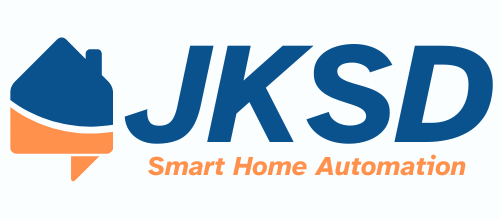Home automation, often known as smart home technology, is a system that makes it possible to automate and control a variety of tasks around the house using networked systems and gadgets. The management of a home is now more convenient, efficient, and secure thanks to the integration of technology. Here’s a thorough explanation of how home automation functions.

The elements that make up home automation
Several essential components are usually included in home automation systems
Smart Devices
These are the appliances and gadgets that have remote control or monitoring capabilities. Smart appliances, lights, locks, cameras, and thermostats are a few examples.
Hub
The hub serves as the home automation system’s main controller. It enables communication between all of the smart gadgets by connecting them. Hubs can function as stand-alone units or as a component of a more complex system, like a voice assistant or smartphone.
Sensors
Sensors collect environmental data for the home. In addition to temperature and mobility, they can also track light levels. By using this data, automatic judgments can be made or homeowners can be made aware of particular problems.
Controllers
These are the interfaces through which the home automation system is communicated with. These could be physical control panels, voice assistants (like Google Assistant or Amazon Alexa), or smartphone apps.
Connectivity
To link devices, home automation systems use a variety of communication protocols. Bluetooth, Z-Wave, Wi-Fi, and Zigbee are examples of common protocols. The communication methods between devices and the hub are established by these protocols.
The Operation of Home Automation
One can deconstruct home automation’s functionality into multiple steps
Device Integration
Devices can be directly connected to the home automation system over Wi-Fi or through a central hub. For instance, a smart thermostat that is connected to the hub or network can be managed from a distance. Usually, every gadget has a software or app that makes integration easier.
Protocols for Communication
It is essential that devices communicate with the hub. Compatibility is vital because different devices may employ different communication protocols. Wi-Fi is widely utilized because of its high data rate and wide coverage, but Z-Wave and Zigbee are used for mesh networking that uses less power. For all of the devices to cooperate, these communications are translated by the hub.
Centralized Management
Centralized control is made possible by the hub or central controller after devices have been integrated. An app for smartphones, a voice assistant, or a special control panel can all help with this. For example, a user can remotely monitor security cameras, schedule heating, and change the lighting in their home from their smartphone.
Scheduling and Automation
The capacity to establish automatic schedules and routines is one of the fundamental components of home automation. For example, you can set your thermostat to increase the temperature before you leave for work and to decrease it when you get there. Lights can also be programmed to switch on at dusk and off at midnight. You can modify these routines according on the time of day, the day of the week, or particular triggers, such as motion detection.
Triggers and Sensors
Because they supply the data that initiates automated activities, sensors are essential to home automation. For instance, a door sensor might notify you if a door is opened unexpectedly, or a motion sensor might switch on a light when it senses movement. Additionally, sensors can report on the humidity or temperature as of right now, which helps to fine-tune automatic responses.
Monitoring and Remote Access
Remote access is a feature of many home automation systems that let users watch and operate their house from any location in the world. Usually, cloud-based services are used to do this. Through their computer or smartphone, users may monitor security camera feeds, change the heating settings, and get alerts about system incidents.
Talk Back
Home automation now cannot function without voice assistants like Apple’s Siri, Google Assistant, and Amazon Alexa. Simple commands can be used by these voice-activated systems to control a variety of smart gadgets. For instance, if the lights are compatible with the voice assistant, stating “Turn off the lights” will instruct the system to carry out this command.
Advantages of Automation at Home
There are various benefits to home automation
Convenience
Remote access and automated processes make daily work and management easier. With a single command or set of predefined schedules, users may manage numerous devices.
Energy Efficiency
By optimizing energy usage, smart lighting and thermostat systems can save utility costs and lower carbon emissions. Smart thermostats, for example, modify the temperature and humidity according to occupancy patterns.
Enhanced Security
Motion sensors, surveillance cameras, and smart locks are just a few of the features that home automation may use to increase security. Users can remotely monitor their home and receive real-time alerts.
Accessibility
For people with impairments or mobility issues, home automation can improve accessibility. Using voice control and programmed processes can help simplify home environment management.
Difficulties and Things to Take Into Account
Although home automation has many advantages, there are drawbacks as well
Compatibility
Not every hub or system is compatible with every device. Careful setup and selection are necessary to guarantee that all devices function together.
Security
Because home automation systems are online, hackers may be able to access them. It is essential to guarantee robust security protocols and frequent updates.
Complexity
For people who are not tech-savvy, setting up and customizing a home automation system might be difficult. Installation and support by professionals could be necessary.
Summary
Modern homes can benefit from home automation, a game-changing technological advancement that increases security, convenience, and efficiency. Homeowners can have a smooth and automated living experience by combining smart devices, sensors, and communication protocols. Even though there are certain difficulties to take into account, home automation is a useful addition to modern house management because its advantages frequently exceed any potential disadvantages.

